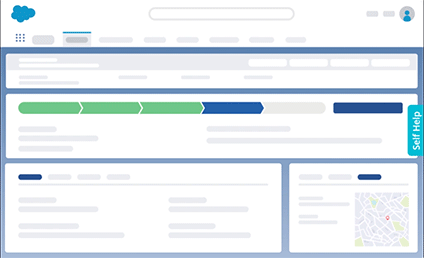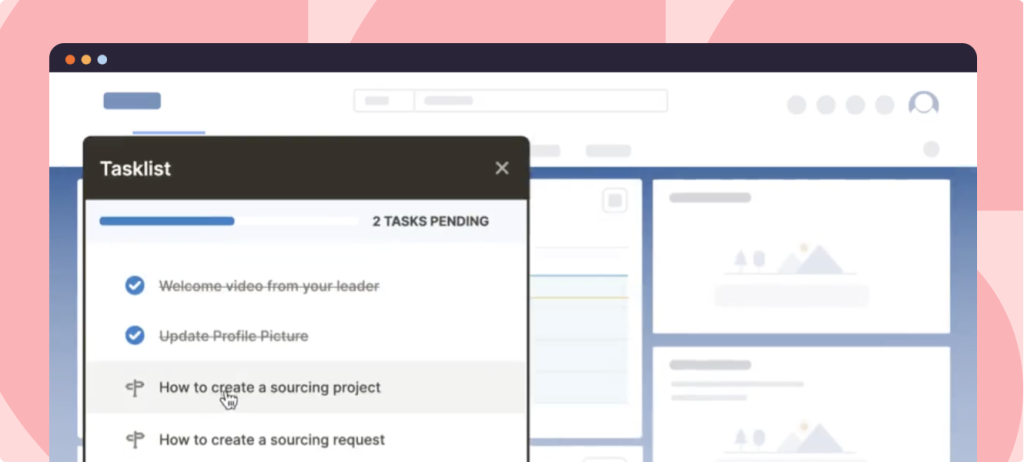Organizations are constantly navigating change.
Whether implementing new technologies, restructuring teams, or navigating market disruptions, organizations must continually change and evolve to stay competitive. However, according to McKinsey, 70% of change initiatives fail to achieve their goals. The primary culprit? Poorly managed change management.
Proper employee training, including hard skill training, change management training, and resiliency training, equips organizational change leaders and employees with the skills, tools, and strategies to navigate transitions successfully. Research reveals that projects with effective change management are seven times more likely to meet objectives than those without.
For organizations, change management training ensures smoother transitions, minimizes disruptions, and fosters a culture of adaptability. For change leaders, training builds the confidence to guide teams through uncertainty, communicate effectively, and maintain momentum. And for employees, it reduces resistance, alleviates stress, and empowers them to embrace change with clarity and confidence.
In this article, we’ll explore why change management training is critical for organizational success, highlight its benefits, and show how it drives measurable improvements in change initiatives.
What Is Change Management Training?
Change management training is a structured initiative designed to equip employees and leaders with the tools, knowledge, and strategies to navigate organizational change effectively. Its goal is to ensure smooth change adoption with minimal disruption to operations.
These training programs typically fall into two categories:
- Training for Leaders
- Training for Employees
Training for Leaders
Leader-focused training is strategic and aims to empower managers and executives to drive change at an organizational level. It includes developing change management plans, assessing risks, fostering stakeholder buy-in, and effectively communicating the benefits of change.
Training for Employees
Employee training is more tactical, focusing on helping individuals understand and adapt to changes that impact their roles and workflows. Topics often include the psychology of change, communication skills, and mastering new processes or systems.
Additionally, change management training can be customized to meet the unique needs of specific teams or departments, ensuring relevance and maximizing effectiveness. This comprehensive approach helps organizations build resilience, reduce resistance to change, and achieve successful outcomes.
What Is the Need For Change Management Training
Here are a few benefits of implementing consistent change management training for organizations, employees, and change leaders.
For organizations
- Increased success rate of change initiatives: Ensures organizational change projects are implemented effectively, meeting objectives within timelines and budgets.
- Minimized resistance to change: Provides strategies to reduce employee pushback and foster acceptance of new processes or systems.
- Enhanced agility: Prepares the organization to adapt quickly to market shifts, technological advancements, or regulatory changes.
- Better resource utilization: Helps optimize time, money, and workforce use during the change process.
- Sustained competitive advantage: Empowers organizations to stay ahead by embedding adaptability into their culture.
For employees
- Reduced anxiety and uncertainty: Helps employees understand the need for change, reducing fear and confusion.
- Increased engagement: Involves employees in the change process, making them feel valued and heard.
- Skill development: Offers training to help employees acquire the skills needed to succeed in the new environment.
- Improved job satisfaction: Ensures employees feel supported, leading to better morale and retention.
- Clear communication: Keeps employees informed about what is happening and why, building trust.
For change leaders
- Enhanced leadership skills: Equips leaders with tools to guide teams through change effectively.
- Better decision-making: Provides frameworks to assess risks, impacts, and the best approaches for implementing change.
- Increased credibility: Builds trust with employees by demonstrating competence in managing transitions.
- Improved conflict resolution: Teaches strategies for addressing and mitigating conflicts arising from change.
- Sustained momentum: Helps leaders maintain engagement and commitment throughout the change process.
Related Resources
Key Components of Change Management Training
Here are the key components of the change management training program.
Leadership skills development
Change begins at the top, making leadership skills development a critical component of change management training. This aspect focuses on equipping leaders with the ability to inspire trust, guide teams effectively, and manage resistance. Leaders are trained to make informed decisions, resolve conflicts, and foster a culture of adaptability within their teams.
Communication strategies
Effective change communication is the backbone of any change initiative. Communication strategy training helps leaders and employees articulate messages clearly, manage expectations, and address concerns. This includes training on how to convey sensitive information, such as organizational restructuring or policy changes, in a way that fosters transparency and trust.
Employee engagement techniques
Engaged employees are more likely to support and adopt change initiatives. Training in employee engagement techniques focuses on involving employees in the change process, fostering a sense of ownership, and reducing resistance. Strategies such as gathering employee feedback, recognizing contributions, and addressing concerns are emphasized. This training ensures that employees feel heard, valued, and motivated, creating a collaborative environment that accelerates the success of change initiatives.
Practical tools and frameworks
Practical tools and frameworks are essential for implementing and managing change effectively. This includes:
- Learning Management Systems (LMS): Used to deliver training, track employee progress, and ensure readiness for change.
- Change Management Software: Modern change management tools support the change management process, implementation, and tracking of change initiatives to ensure that transitions are carried out in a structured and systematic manner.
- Digital Adoption Platforms (DAP): DAPs help employees adapt to new software or processes through in-app guidance and tutorials. These platforms provide contextual training, reducing the learning curve and ensuring faster adoption of new technologies.
- Sandbox Environments: Sandbox environments offer a risk-free space for employees to practice using new tools or systems. By simulating real-world scenarios, employees can learn through hands-on experience without impacting live operations.
- Performance Dashboards: These systems provide real-time insights into the impact of change on key performance indicators (KPIs), allowing for timely adjustments.
These tools streamline the change process, ensuring efficiency and accountability at every step.
Types of training
- Scenario-based learning: Real-world simulations help employees and leaders practice handling challenges, making decisions, and resolving resistance during change initiatives.
- Workshops and seminars: Interactive, hands-on training to explore change management concepts, strategies, and best practices in depth.
- Online courses: Flexible, self-paced modules that cover essential change management topics, allowing participants to learn at their convenience.
- Role-specific training: Customized programs designed to address the unique responsibilities and challenges of leaders, managers, and employees in specific roles or industries.
How to Create a Change Management Training Program
Creating a change management training program requires consistency. Stick to a plan to deliver a program that helps your employees navigate change. Here is a 10-step plan to help you create, deliver, and manage an effective change management training program for your employees.
1. Define your change management strategy
Change management training must be focused on a specific change initiative. So, before you build a training program, you must fully define your enterprise change management strategy.
If you haven’t done it yet, here are the steps you need to take:
- Evaluate the need for change.
- Identify areas affected by the change.
- Define the change from a technical perspective (how does it affect your tech stack?)
- Define the change from people’s perspective (how does it affect your internal operations?)
- Choose a change management model.
- Specify change management KPIs to measure the success of your initiative.
Once you have an idea of what this particular transformation will involve and how it affects people in your organization, you can develop a change management training plan accordingly.
2. Create a change vision
To align everyone involved around a common purpose, you must create a vision for the change. A vision outlines the goals and objectives of change, helping stakeholders understand the benefits of the initiative and get on board with the idea.
To create a vision, you should:
- Clearly articulate the goals and objectives of the change initiative.
- Describe the desired outcomes for the organization once the change is implemented.
- Communicate the benefits of change to all stakeholders, including employees, customers, and partners.
- Develop an IT roadmap or plan that outlines specific steps required to achieve the digital transformation or change vision.
A vision statement will create a sense of urgency around the need for change and motivate your employees. It will also help you guide the development of the change management training program by providing a clear understanding of the outcomes that the program should support.
3. Talk to employees
To identify the topics you need to address with change management training, talk to your employees. Explain the change initiatives that are to be implemented and ask them what they would need to embrace the change.
Whether during an in-person meeting or with a simple online survey, such a simple step will allow you to involve all stakeholders early and incorporate their feedback into your training plan.
4. Assess risks associated with change
When undergoing organizational change, you’ll inevitably face issues impacting an organization’s bottom line. These can be delays in implementation and results, compromised quality standards, increased costs, and more. You can proactively manage potential issues that could derail your change initiative by assessing the risks associated with the change beforehand.
Once you specify potential change risks, you’ll be able to formulate tactics to mitigate them. By including a risk management plan in your training program, you’ll warn your stakeholders about possible issues and give them the necessary tools and methods to address these issues proactively.
5. Define the timeline
Establishing a timeline for your change management training program helps you set expectations, allocate resources effectively, and ensure that the training is aligned with the overall change initiative timeline.
To establish a timeline for your change management training program, follow these steps:
- Define the key milestones and deadlines associated with the change initiative. When will the change be implemented, and when is it expected to be fully adopted?
- Determine the training needs associated with each milestone. What skills and knowledge do employees need to successfully navigate each phase of the change?
- Develop a timeline for each training milestone based on the scope of change and available resources. This includes time for designing, developing, and delivering the training.
- Assign ownership for each training milestone and ensure the team members have the necessary skills and resources to meet their deadlines.
6. Choose training methods
The employee training methods you choose must be tailored to the needs of your organization, the learning styles of your employees, and the specific change initiative you are implementing.
Here are some employee training programs particularly effective for change management training:
- Instructor-led training. This method involves a live instructor delivering knowledge in person or online. You can use it to deliver complex information and engage employees in interactive activities.
- eLearning. Most often, employee training content is provided online through an interactive platform. It’s a great method for remote or geographically dispersed teams.
- On-the-job training. On-the-job training method involves providing hands-on training and coaching to employees while they work. An example of on-the-job training would be sales reps adopting a new CRM system with the help of in-app guidance.
- Role-playing and simulation. These methods allow employees to practice and experience how to deal with specific situations that arise during the change process.
To address the learning styles of different individuals, you can pick several training methods and combine them in your program.
7. Add technology to your training mix
Don’t be afraid to implement new technology. Some change management tools can make it easier for your employees to navigate change.
You can use a digital adoption platform such as Whatfix to train people on the tools you’ve adopted as a part of your change initiative. Whatfix overlays onto any software solution and empowers IT and L&D teams to create in-app guidance and self-help support directly inside your digital applications and processes with a no-code editor.
With Whatfix, organizations can create:
- Product tours and guided walkthroughs to introduce an employee to a new tool and showcase its main processes and workflows.
- Pop-ups on your internal applications that alert employees to the new change and subsequent change training.
- Self-help wikis that connect to your internal documentation, knowledge, third-party links, and other information that empowers employees to find answers to their change-related questions.


→ Guide users through complex apps with contextual, role-based in-app guidance.
→ Support users at the moment of need with AI-powered Self Help and embedded workflow assistance.
→ Analyze user engagement to identify friction points and optimize business processes.
8. Establish change leaders
You need to assign change leaders responsible for helping the rest of the company navigate the change process. These change agents are people who have hands-on experience with this particular change initiative or technology. They also need strong leadership and communication skills to inspire and motivate people through the transition.
Empower your change leaders to bring their experience to the table by involving them in the development and delivery of the training program.
Establishing change leaders creates a sense of ownership and accountability for the change initiative, which ultimately increases the chance of success.
9. Provide ongoing training and support
Change is a process, not a one-off event. To ensure continuous innovation and prevent change fatigue, you need to provide ongoing change management training and support to your employees.
This is how you can build a culture of continuous training:
- Schedule regular training sessions and workshops
- Offer ongoing one-on-one coaching and mentoring
- Create a support network by encouraging employees to connect and share their experiences
- Measure progress and adjust your training program based on the results
10. Collect feedback
You should be adjusting your program continuously to address the changing needs of your organization and achieve desired outcomes. Employee feedback helps measure the impact of your program and identify areas that need improvement.
To collect feedback, you can use various methods, such as surveys, interviews, and focus groups. You can ask post-training questions like:
- Did the training help you understand the change initiative?
- What problems are you facing when adopting the new workflows/technology?
- How could we improve the training program to help you better navigate the change?
It’s important to note that feedback must be collected on an ongoing basis, not just at the end of the training program.
Download our free Post-Training Survey Questions template to start designing effective feedback programs for your organization!
✓ Thank you, the checklist will be sent to your email
Change Management Training Courses
You don’t have to develop a custom training program or rely on your current company to provide you with the training to become a change management expert.
There are many change management certification programs and online courses that provide excellent change-related resources to build your experience and knowledge.
Here are some of the best change management training courses to explore:
Workforce Training
Fundamentals of Change Management Training Course by BSI
A one-day course exploring key skills to support the implementation or improvement of a management system, applicable to anyone implementing any standard.
Change Management Training Course by Live And Learn Consultancy
A 1-day course providing best practice tools to help successfully execute change, suitable for HR professionals, leaders, and managers.
Change Management Training Course by BiteSize Learning
Helps leaders understand change communication strategies combined with emotional intelligence and empathy, building organizational resilience.
Change Management Training by Lecturio
The brief Udemy course is designed for senior managers who need guidance with implementing change in their organization. It’s a great option for leaders who lack theoretical knowledge of change management.
Helping Employees Embrace Change by Todd Dewett
Todd Dewett, a leadership and success author, offers an introductory course to change management for leaders. It helps managers to communicate their change strategy, foster collaboration in the workplace, and apply active listening to collect employee feedback. It’s a good place to start learning about change management.
Managing Change: Learn to Thrive Through Change by Caroline Samne
This is another short course that covers the key principles of change management. You can include it in your company’s training program to help your employees fight the fear of change and equip them to thrive through your change process.
Change Management Certification Program by Prosci
This is the second course by APMG for transformation managers willing to gain practical change management skills. To enroll in the program, you need the certificate of completion from The Change Management Foundation course.
Change Management Communication: How to Make Change Stick by Carla Howard
The program focuses on change management communication. This is a very practical change management training course, filled with examples, tools, and templates to help change experts act on acquired knowledge right away.
Training for Change Leaders
Change Management Practitioner – APMG Certification by QA
An interactive course enabling participants to understand and effectively manage the impact of change on organizations and their people.
Leading and Managing Change by The Management Centre
Based on Kotter’s model, this program provides a framework to start or shape a change process, or to re-energize a faltering one.
Certified Professional Change Management (CPCM) by The Knowledge Academy
A 2-day intensive course designed to provide a comprehensive understanding of change management principles and practices.
Change Management Courses by ChangeQuest
Offers both Foundation and Practitioner levels, focusing on achieving successful organizational change.
Change Management Combined (Foundation & Practitioner) by Quanta
Designed for aspiring or current change agents, project managers, and business leaders involved in leading organizational change.
Change Management Training for Leaders and Managers by AMA
Develops skills to implement change initiatives effectively, enhancing employee engagement and mitigating risks.
Leading transformation: Manage change by Macquarie University
The 18-hour course consists of six modules where change leaders gain insights to design successful change initiatives. The program includes video lectures, quizzes, discussion prompts, and written assessments to provide students with a structured learning experience.
Lean Leadership Skills, Lean Culture & Lean Management by Larry Miller
The course focuses on explaining the lean change management methodology. In six hours of on-demand training, students discover how to implement continuous improvement and lean culture in their organization.
These courses offer valuable insights and practical strategies to support both employees and leaders in managing change effectively within their organizations.
Change Clicks Better With Whatfix
The key to creating a successful change management training program is adopting the right tool that will help your workforce to adopt change faster and more proficiently.
A digital adoption platform such as Whatfix is one such tool you need to carry out change management initiatives related to introducing new technology and digital processes without friction. Whatfix makes it easier for your employees to master new business software or application with in-app guidance, interactive walkthroughs, smart tips, and in-app support.
Furthermore, it also enables you to track the progress of your change management training and gather feedback from the team to measure training effectiveness and continuously improve the program.
To learn more about how Whatfix enables change management, schedule a free demo with us today!






